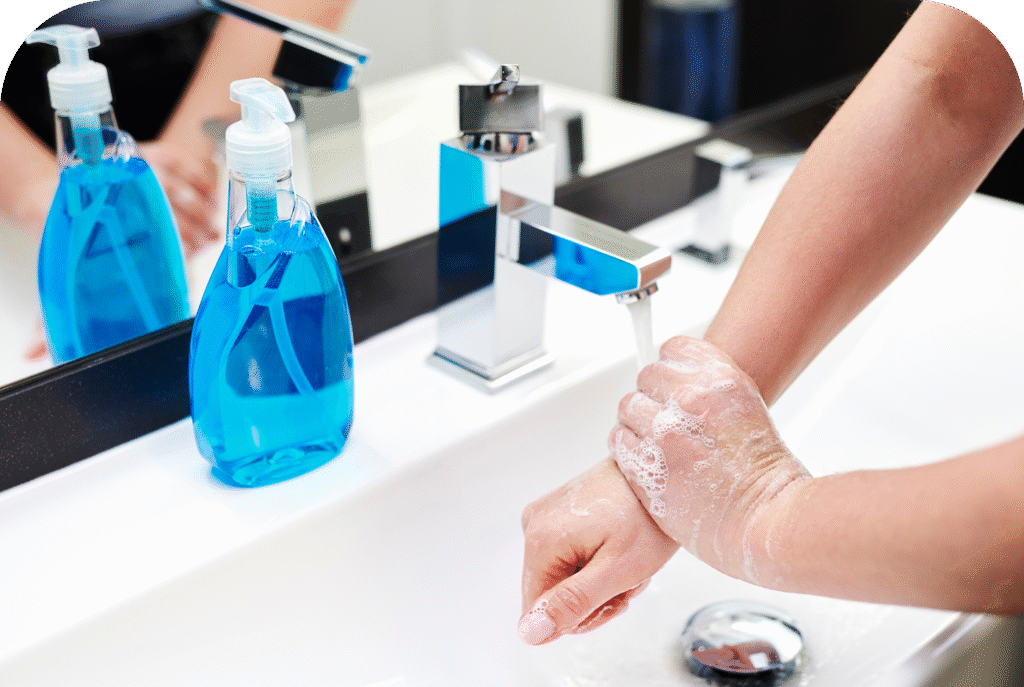Personal hygiene is an essential part of daily life, confidence, and overall health, but for stroke survivors with limited mobility or use of only one hand, routine tasks like brushing teeth, showering, and using the restroom can feel frustrating or even impossible.
Thankfully, with the right adaptive equipment, strategies, and a little patience, stroke survivors can regain independence in personal care and develop new ways to maintain hygiene effectively.
This blog will explore:
✔ Why hygiene can be difficult after a stroke
✔ Essential adaptive tools for hygiene
✔ Techniques for one-handed hygiene care
✔ Tips for making daily hygiene easier
Why Hygiene Can Be Challenging After a Stroke
A stroke can cause muscle weakness, loss of coordination, or paralysis on one side of the body, making routine hygiene difficult. Some common struggles include:
✔ Brushing teeth and flossing—holding a toothbrush, applying toothpaste, or maneuvering floss can be difficult.
✔ Showering—balance issues, difficulty scrubbing, and safely getting in/out of the shower can be concerning.
✔ Using the restroom—wiping, adjusting clothing, or getting on/off the toilet may require assistance.
✔ Dressing and grooming—putting on deodorant, shaving, or washing hair can become frustrating.
Many survivors experience a loss of confidence or dignity, but with the right tools and adjustments, it’s possible to relearn these skills and regain control over daily hygiene.
Essential Adaptive Tools for Hygiene
Using adaptive equipment can make hygiene tasks easier, even for those with limited hand function or mobility challenges.
1. Brushing Teeth & Oral Care
✔ Electric toothbrush – Reduces the need for precise hand movements.
✔ Toothpaste dispensers – Allow easy one-handed application.
✔ Floss holders or water flossers – Help clean between teeth without using both hands.
🔹 Tip: Rest your elbow on a countertop for stability when brushing.
2. Showering & Bathing
✔ Shower chairs – Provide a safe place to sit while washing.
✔ Long-handled sponges – Help reach the back and legs without overextending.
✔ Hands-free soap dispensers – Allow easy access to soap.
✔ Handheld showerheads – Enable better control when rinsing off.
🔹 Tip: Install grab bars and non-slip mats for added safety.
3. Using the Restroom
✔ Raised toilet seats – Make sitting and standing easier.
✔ Toilet safety rails – Provide extra balance and support.
✔ One-handed bidet attachments – Help with hygiene when wiping is difficult.
✔ Dressing sticks & adaptive underwear – Assist with pulling up pants.
🔹 Tip: Consider wearing loose-fitting clothes for easier bathroom trips.
4. Hair Care & Grooming
✔ One-handed nail clippers – Help with trimming nails.
✔ Electric razors – Make shaving safer and easier.
✔ Adaptive hairbrushes with extended handles – Assist with styling.
✔ No-rinse shampoo caps – Allow hair washing without needing a full shower.
🔹 Tip: Use dry shampoo or leave-in conditioner for easier hair maintenance.
Techniques for One-Handed Hygiene Care
If one side of your body is affected, there are workarounds to make hygiene tasks easier.
1. Brushing Teeth with One Hand
✔ Use a toothpaste dispenser or squeeze the tube against the sink to apply paste.
✔ Stabilize the toothbrush by holding it in your mouth while applying toothpaste.
✔ Use an electric toothbrush to minimize movement.
2. Showering with One Hand
✔ Use a loofah mitt instead of a washcloth for easier scrubbing.
✔ Apply shampoo directly onto the scalp and massage with fingertips.
✔ Choose a pump bottle for soap/shampoo instead of squeeze bottles.
3. Getting Dressed After Bathing
✔ Use a towel wrap or wear a robe to avoid struggling with drying off.
✔ Sit down while dressing to avoid falls and make putting on clothes easier.
✔ Use adaptive dressing tools like a button hook or elastic shoelaces.
4. One-Handed Toilet Hygiene
✔ If wiping is difficult, use a bidet attachment or long-handled wiping aid.
✔ If standing is a struggle, consider a grab bar next to the toilet for support.
✔ Keep flushable wipes nearby for easier cleaning.
Tips for Making Daily Hygiene Easier
✔ Establish a routine—doing the same hygiene steps every day builds muscle memory.
✔ Use a mirror—seeing what you’re doing can help guide movements.
✔ Take your time—rushing leads to frustration. Go slow and be patient with yourself.
✔ Modify your space—place frequently used items within easy reach to avoid extra effort.
✔ Ask for help when needed—it’s okay to have a caregiver assist with hygiene when necessary.
Final Thoughts: Regaining Confidence in Hygiene After a Stroke
Adapting to personal hygiene after a stroke can be challenging, but not impossible. With the right adaptive tools, one-handed techniques, and patience, stroke survivors can maintain independence and feel confident in daily self-care.
✔ Use adaptive toothbrushes, shower aids, and hygiene tools to make tasks easier.
✔ Practice new techniques to adjust to using one hand for personal care.
✔ Modify your environment for safety and convenience.
✔ Be patient with yourself—progress takes time, but every small victory matters.
💙 Have you found any helpful hygiene strategies or tools after a stroke? Share your experiences in the comments!

